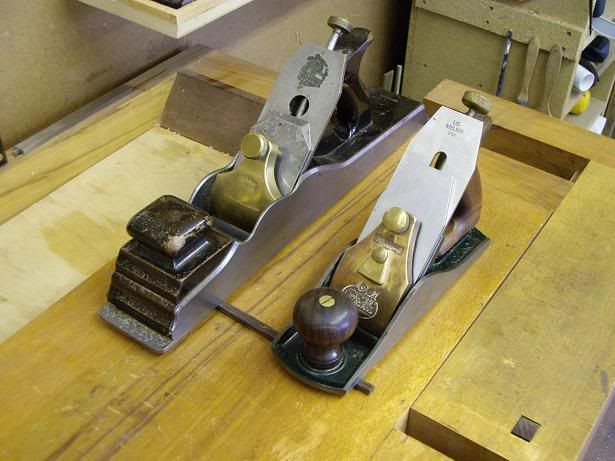Rod - this is an interesting one and will no doubt be the start of a fairly long thread. We've had a couple of recent Bash's at my place and I've had a chance to look carefully at old planes, newer planes, LN, LV, Norris and woodies (the ones I have made or bought and those that Philly has made, not including his JK smoother)
Older planes of the Record or Stanley variety in my view are superior to the more modern offerings and can often be recognized by the low front knob and other details on the casting and frog. They can be made to work and look superb, I recently finished this one which now works superbly but took a vast amount of effort.....what Alf would call a 'fetish fettle':
The planes from LV,LN and Clifton (I used some of Paul C's planes at our MicroBash a few weeks ago.....still got your No6 Paul? :lol

are all very,very good and differ only IMO in the
feel they have when using them on difficult timber, all are made to exacting standards and have subtle nuances which make them slightly different...at the end of the day you pays your money etc. I recently have been playing around with the Low Angle Jack from LV and again have been hugely impressed, 'specially in use on the shooting board and for planing across end grain.
Philly and I have been making woodies (Phill's made a couple more than me :wink

and these are interesting to make and perform very well 'specially when you are able to make and temper the irons, which is not as difficult as it seems.
I use as my main bench plane my Norris A1 panel plane:
which has a
weight on the timber....I haven't found anything better to date. I also use a Record Calvert-Stevens smoother with a LN blade assy which again is now really good after a
lot of fettling. There is currently an A1 Norris in PFT, not as pretty as mine

going for
lots, far more than the equivalent sized LN jack.
So, does an old Norris work better than a new LN? For my money it does, can't explain why, it's all subjective but just
feels better on the wood.
If you're in Hampshire and fancy a bimble over one day to Salisbury let me know and you can have a play in the workshop - Rob


































